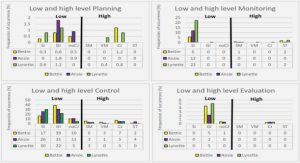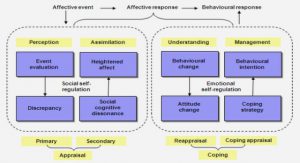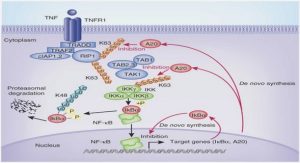Get Complete Project Material File(s) Now! »
Military and Naval uses cases
Military authorities are in charge of a very broad range of missions that require use of all possible communication media. Indeed, Military authorities rely on Command, Control, Communications, Computers, and Intelligence (C4I) to effectively address their missions. Communications for the military forces are very strategic for controlling and information sharing in real time among different forces to enable fast reaction to an event, as General Dempsey explains: “Information systems and networks provide the means to send, receive, share, and utilize information. The synthesis of advanced communications system capabilities and sound doctrine leads to information superiority, which is essential to success in all military operations” [1].
In most environments, deployed military forces have to rely heavily on wireless communications to answer their communication needs as there is either no fixed infrastructure available (i.e hostile territory) or their mobile behavior prevents them to use any. For instance, navies are operating at sea, from the sea side to high sea where there is no available infrastructure. Nevertheless, fleet marine forces have to communicate to several entities that can be close or very far away: civil surface ships; military surface ships and submarines; airplanes; UAVs and Unmanned Surface Vehicles (USVs); operational centers at land, etc. Figure 1 provides an overview of some communication needs of military and Naval Forces.
rat of autonomous network
Backhaul link consideration
Indeed, using a dedicated RAT requires dedicated frequency bands and the associated hardware for the backhaul links while we target a solution that minimizes the hardware and frequency resource requirements and have already selected LTE as the access RAT. Even if some hardware resources can be shared (such as antennas), isolation between the access and backhaul bands at each BTS is required, which might not be possible due to regulatory constraints on getting frequency resources for each distinct band (PS use cases) or due to other systems (military use cases). For instance, dividing a 10MHz channel bandwidth into two 5MHz sub-bands to isolate access and backhaul will put high requirements on filters and amplifiers at each node to avoid self-interference or will require split in smaller subbands. Furthermore, the split of the bandwidth will not scale with the spatio-temporal traffic variability as access and backhaul resources are completely separated, which in turn may reduce the overall performance. Use of ISM bands to avoid regulatory constraints may limit the coverage due to the power limitations and interference, especially as the mobile behavior prevents the use of highly directional antennas. However, evolution of antenna tracking and beam forming techniques might solve this specific problem, at a higher cost due to more complex power and antenna systems.
Table of contents :
Abstract
Résumé
Acknowledgments
Contents
List of Figures
List of Tables
1 introduction
1.1 Motivations
1.2 Contributions
2 state of the art and problem statement
2.1 Uses cases and current solutions
2.1.1 Military and Naval uses cases
2.1.2 Public Safety uses cases
2.2 Network topologies
2.2.1 Scenarios
2.2.2 Scenarios of reference
2.3 Problem Statement
2.3.1 High level requirements
3 design constraints and rat choice
3.1 External constraints
3.2 RAT of autonomous network
3.2.1 LTE state of the art
3.2.2 Backhaul link consideration
4 architecture of the autonomous bts
4.1 Challenges
4.1.1 Support of Legacy UEs
4.1.2 Autonomous operation
4.2 Architecture
4.3 e2NB states
4.4 e2NB network topologies
5 design elements and procedures of e2nb
5.1 Physical layer interfaces
5.1.1 Background LTE information
5.1.2 Uu interface
5.1.3 Un relay interface
5.2 Physical layer design issues
5.2.1 Synchronization
5.2.2 Range limitation
5.2.3 HARQ modifications for Un interface
5.3 e2NB procedures and parameters configuration
5.3.1 eNB parameters
5.3.2 vUE attach procedure
5.3.3 e2NB operation flow
5.4 Core Network logical connectivity
5.4.1 MME
5.4.2 HSS provisioning and cooperation
5.4.3 S/P-GW
5.4.4 Routing
5.4.5 Application and services
6 coe algorithms
6.1 Problem overview
6.2 COE role and proposed hierarchical approach
6.3 COE Controller Scheduling Algorithm
6.3.1 Superframe duration computation (LSuF )
6.3.2 SF allocation for inter-e2NB self-backhauling
6.3.3 Distributed link scheduling
6.4 Relaying direction selection
6.5 Extensions to TDD system
6.6 Extensions to multi-antenna and multi-sector BTS
6.6.1 Analysis of the approach complexity
6.7 Interference management
6.8 Discussion on security issues
7 experimentations
7.1 Physical channel performance evaluation
7.1.1 Computation time
7.1.2 Link-level performance
7.2 Evaluation of the proposed approach
7.2.1 Simulation environment
7.2.2 Considered Algorithms
7.2.3 Simulation Results
7.2.4 Summary
7.3 Performance comparison of in-band and out-band deployment
7.4 Summary
7.4.1 Limitations of the experiments
7.4.2 Potential improvements of the proposed approach
8 conclusion
8.1 Perspectives and future work
9 bibliography
Appendices
a additional figures
b résumé en français
b.1 Introduction
b.1.1 Motivation
b.1.2 Contributions
b.2 État de l’art et définition de la problématique
b.2.1 Cas d’utilisation militaires
b.2.2 Communications pour la sécurité publique
b.2.3 Topologies réseaux associées
b.2.4 Énoncé du problème
b.3 Contraintes de conception et choix de la technologie d’accès radio
b.3.1 Contraintes externes
b.3.2 Choix de la technologie d’accès radio
b.4 Architecture de station de base autonome
b.4.1 États de l’e2NB
b.4.2 Topologies réseaux possibles
b.5 Conception détaillée et procédures de l’e2NB
b.6 Algorithmes d’ordonnancement
b.6.1 Rôle du COE et approche hiérarchique proposée
b.7 Expérimentations
b.8 Conclusion
b.8.1 Perspectives et travaux futurs
c acronyms




